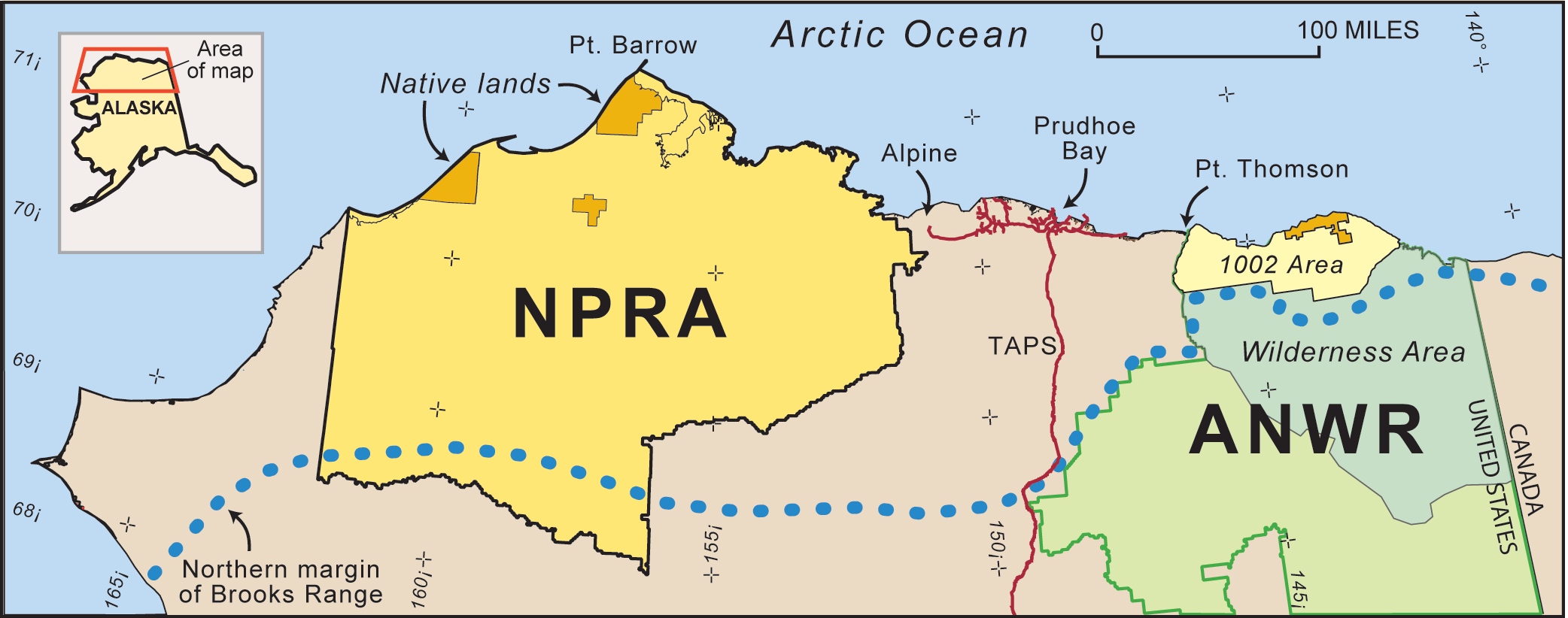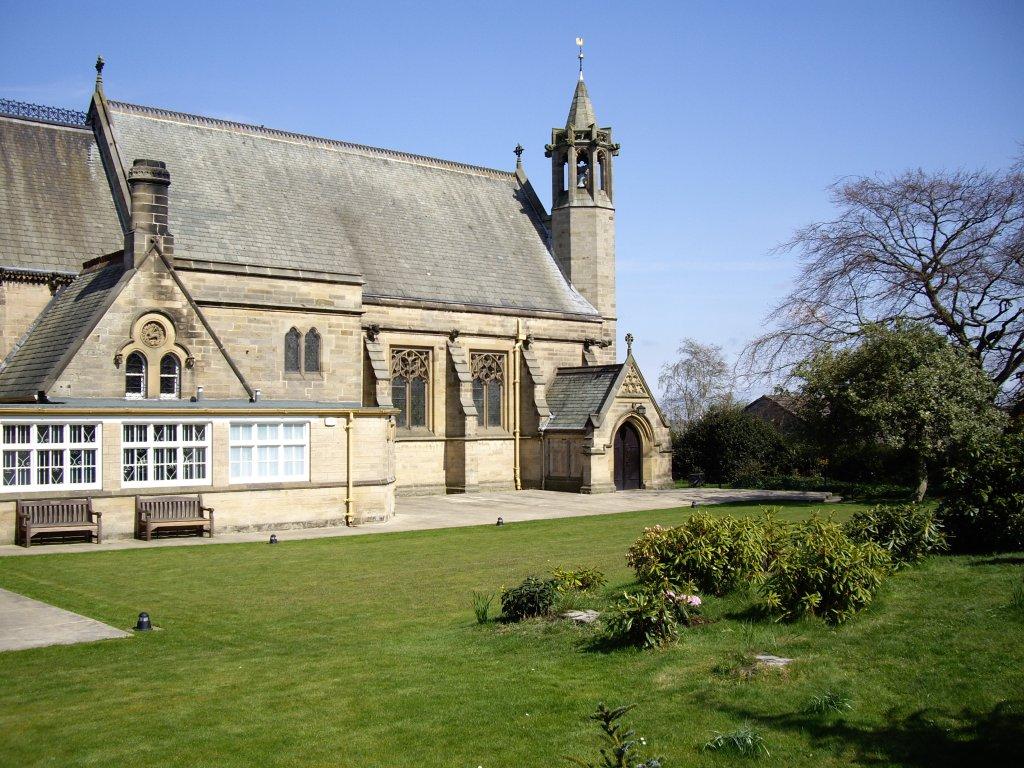|
Prudhoe Bay Oil Field
Prudhoe Bay Oil Field is a large oil field on Alaska's North Slope. It is the largest oil field in North America, covering and originally containing approximately of oil.Prudhoe Bay Fact Sheet . BP. August 2006. (Adobe Acrobat *.PDF document) The amount of recoverable oil in the field is more than double that of the next largest field in the United States by acreage (the East Texas oil field), while the largest by reserves is the |
Alaska North Slope
The Alaska North Slope ( Iñupiaq: ''Siḷaliñiq'') is the region of the U.S. state of Alaska located on the northern slope of the Brooks Range along the coast of two marginal seas of the Arctic Ocean, the Chukchi Sea being on the western side of Point Barrow, and the Beaufort Sea on the eastern. Petroleum resources The Alaska North Slope region includes the National Petroleum Reserve–Alaska, with the bulk of Alaska's known petroleum until the Prudhoe Bay Oil Field was discovered in 1968, followed by the Kuparuk River oil field in 1969. The region also includes the Arctic National Wildlife Refuge, which itself has been the subject of controversy surrounding the possibility of petroleum drilling within its boundaries. The petroleum extracted from the region is transferred south by means of the Trans-Alaska Pipeline System to Valdez on the Pacific Ocean. Under the North Slope is an ancient seabed, which is the source of the oil. Within the North Slope, there is a geologic ... [...More Info...] [...Related Items...] OR: [Wikipedia] [Google] [Baidu] |
Prudhoe Bay
Prudhoe Bay is a census-designated place (CDP) located in North Slope Borough in the U.S. state of Alaska. As of the 2010 census, the population of the CDP was 2,174 people, up from just five residents in the 2000 census; however, at any given time, several thousand transient workers support the Prudhoe Bay oil field. The airport, lodging and general store are located in Deadhorse, and the rigs and processing facilities are located on scattered gravel pads laid atop the tundra. It is only during winter that the surface is hard enough to support heavy equipment, and new construction happens at that time. Prudhoe Bay is the unofficial northern terminus of the Pan-American Highway. As the bay itself is still 10 miles further north through a security checkpoint, open water is not visible from the highway. A few tourists, arriving by bus after a two-day ride up the Dalton Highway from Fairbanks, come to see the tundra, the Arctic Ocean and the midnight sun, staying in lodgings ass ... [...More Info...] [...Related Items...] OR: [Wikipedia] [Google] [Baidu] |
Source Rock
In petroleum geology, source rock is rock which has generated hydrocarbons or which could generate hydrocarbons. Source rocks are one of the necessary elements of a working petroleum system. They are organic-rich sediments that may have been deposited in a variety of environments including deep water marine, lacustrine and deltaic. Oil shale can be regarded as an organic-rich but immature source rock from which little or no oil has been generated and expelled. Subsurface source rock mapping methodologies make it possible to identify likely zones of petroleum occurrence in sedimentary basins as well as shale gas plays. Types of source rocks Source rocks are classified from the types of kerogen that they contain, which in turn governs the type of hydrocarbons that will be generated: * Type I source rocks are formed from algal remains deposited under anoxic conditions in deep lakes: they tend to generate waxy crude oils when submitted to thermal stress during deep burial. * Type ... [...More Info...] [...Related Items...] OR: [Wikipedia] [Google] [Baidu] |
Kuparuk River Oil Field
The Kuparuk River Oil Field, or Kuparuk, located in North Slope Borough, Alaska, United States, is the second largest oil field in North America by area. It produces approximately of oil and is estimated to have of recoverable oil reserves. It is named for the Kuparuk River. Production History Kuparuk was discovered by Sinclair Oil in April 1969 at the Ugnu Number 1 well, named for the nearby Ugnuravik River. Oil was found in the Kuparuk sandstone on the Colville structure. Production was first announced by ARCO in 1979 and planned to start in 1982. Production actually began December 13, 1981, on five small gravel drilling pads. Production was expected to peak in 1986 at , but did not peak until 1992 at from 371 wells. In December 2002, the production averaged from 448 wells, but by September 2016 the average declined to . For the first six months of 2017 production averaged with a water cut of 87.4 percent. During the first half of 2019 the pool averaged with a water cu ... [...More Info...] [...Related Items...] OR: [Wikipedia] [Google] [Baidu] |
Prudhoe Bay Aerial FWS
Prudhoe ( ) is a town in south Northumberland, England, about west of the city of Newcastle upon Tyne and just south of the River Tyne. Situated on a steep, north-facing hill in the Tyne valley, Prudhoe had a population of 11,675 at the 2011 Census. It has largely become a commuter town for nearby Newcastle. Nearby settlements include Ovingham, Ovington, Wylam, Stocksfield, Crawcrook, Hedley on the Hill and Mickley. History The name derives from the Anglo-Saxon personal name Prud (from ''prūd'', meaning proud) and hoe or haugh, a spur of land. There has been a castle at Prudhoe since ancient times, when England was at war with Scotland. The area now known as Castlefields was a fruit orchard, and the Scots were rumoured to have burnt this orchard while attempting to capture Prudhoe Castle. The castle, originally owned by the D'Umfravilles, then the Percys and now English Heritage, is considered to be the only medieval fortification in Northumberland never to have ... [...More Info...] [...Related Items...] OR: [Wikipedia] [Google] [Baidu] |
National Register Of Historic Places
The National Register of Historic Places (NRHP) is the United States federal government's official list of districts, sites, buildings, structures and objects deemed worthy of preservation for their historical significance or "great artistic value". A property listed in the National Register, or located within a National Register Historic District, may qualify for tax incentives derived from the total value of expenses incurred in preserving the property. The passage of the National Historic Preservation Act (NHPA) in 1966 established the National Register and the process for adding properties to it. Of the more than one and a half million properties on the National Register, 95,000 are listed individually. The remainder are contributing resources within historic districts. For most of its history, the National Register has been administered by the National Park Service (NPS), an agency within the U.S. Department of the Interior. Its goals are to help property owners an ... [...More Info...] [...Related Items...] OR: [Wikipedia] [Google] [Baidu] |
Alaska Pipeline
The Trans-Alaska Pipeline System (TAPS) is an oil transportation system spanning Alaska, including the trans-Alaska crude-oil pipeline, 11 pump stations, several hundred miles of feeder pipelines, and the Valdez Marine Terminal. TAPS is one of the world's largest pipeline systems. The core pipeline itself, which is commonly called the Alaska pipeline, trans-Alaska pipeline, or Alyeska pipeline, (or the pipeline as referred to in Alaska), is an long, diameter pipeline that conveys oil from Prudhoe Bay, on Alaska's North Slope, south to Valdez, on the shores of Prince William Sound in southcentral Alaska. The crude oil pipeline is privately owned by the Alyeska Pipeline Service Company. Oil was first discovered in Prudhoe Bay in 1968 and the 800 miles of 48" steel pipe was ordered from Japan in 1969 (US steel manufacturers did not have the capacity at that time) however, construction was delayed for nearly 5 years due to legal and environmental issues. The eight oil compani ... [...More Info...] [...Related Items...] OR: [Wikipedia] [Google] [Baidu] |
Marvin Mangus
Marvin Dale Mangus (1924–2009) was an American geologist and landscape painter. He was giving the honor of driving a purely symbolic wood stake prior to start of drilling the actual oil well by the Atlantic Richfield Corporation, his employer. The focus of his later art career was glorified role of geologist and other exploration of Alaska. He painted animals and birds and was recognized with awards from The National Park Service Early life Marvin Mangus was born in Altoona, Pennsylvania. His grandfather Cyrus and his two grand-uncles were all civil war veterans and lived into their 80s , 7 His father, Alfred Ross Mangus (1889–1974), initially worked for the Pennsylvania Railroad in Altoona, but later started Mangus Express Company, a small trucking company based in Altoona. Marvin Mangus was the youngest of three siblings. His brother Alfred was hit by a car and killed 920-1933 His sister Izora lived from 916-2003 At Altoona Area High School, Mangus was interested at ... [...More Info...] [...Related Items...] OR: [Wikipedia] [Google] [Baidu] |
Exxon
ExxonMobil Corporation (commonly shortened to Exxon) is an American multinational oil and gas corporation headquartered in Irving, Texas. It is the largest direct descendant of John D. Rockefeller's Standard Oil, and was formed on November 30, 1999, by the merger of Exxon and Mobil, both of which are used as retail brands, alongside Esso, for fueling stations and downstream products today. The company is vertically integrated across the entire oil and gas industry, and within it is also a chemicals division which produces plastic, synthetic rubber, and other chemical products. ExxonMobil is incorporated in New Jersey. ExxonMobil's earliest corporate ancestor was Vacuum Oil Company, though Standard Oil is its largest ancestor prior to its breakup. The entity today known as ExxonMobil grew out of the Standard Oil Company of New Jersey (or Jersey Standard for short), the corporate entity which effectively controlled all of Standard Oil prior to its breakup. Jersey Standard g ... [...More Info...] [...Related Items...] OR: [Wikipedia] [Google] [Baidu] |
Alaska Statehood Act
The Alaska Statehood Act () was a statehood admission law, introduced by Delegate E.L. Bob Bartlett and signed by President Dwight D. Eisenhower on July 7, 1958, allowing Alaska to become the 49th U.S. state on January 3, 1959. The law was the result of a multiple decade effort from many Alaskans such as Bartlett, Ernest Gruening, Bill Egan, Bob Atwood and Ted Stevens. The law was first introduced by James Wickersham in 1916, shortly after the First Organic Act. However, due to a lack of interest from Alaskans, the bill was never introduced. Efforts ramped up in 1943, with Bartlett's rendition of the act being first introduced in 1947 & 1950, with the backing of President Harry Truman. However, due to opposition from powerful southern U.S. Congressmen, it took until 1958 to pass the law, with the convincing of Bob Bartlett. Gruening worked on rallying support from Alaskans, launching the Alaskan Constitutional Convention in 1956, which elected Bill Egan & Gruening as Sh ... [...More Info...] [...Related Items...] OR: [Wikipedia] [Google] [Baidu] |
Roger MacBride 1976 Campaign
Roger is a given name, usually masculine, and a surname. The given name is derived from the Old French personal names ' and '. These names are of Germanic origin, derived from the elements ', ''χrōþi'' ("fame", "renown", "honour") and ', ' ("spear", "lance") (Hrōþigēraz). The name was introduced into England by the Normans. In Normandy, the Frankish name had been reinforced by the Old Norse cognate '. The name introduced into England replaced the Old English cognate '. ''Roger'' became a very common given name during the Middle Ages. A variant form of the given name ''Roger'' that is closer to the name's origin is '' Rodger''. Slang and other uses Roger is also a short version of the term " Jolly Roger", which refers to a black flag with a white skull and crossbones, formerly used by sea pirates since as early as 1723. From up to , Roger was slang for the word "penis". In ''Under Milk Wood'', Dylan Thomas writes "jolly, rodgered" suggesting both the sexual double en ... [...More Info...] [...Related Items...] OR: [Wikipedia] [Google] [Baidu] |
Prudhoe Bay Oil Fields 1971 FWS
Prudhoe ( ) is a town in south Northumberland, England, about west of the city of Newcastle upon Tyne and just south of the River Tyne. Situated on a steep, north-facing hill in the Tyne valley, Prudhoe had a population of 11,675 at the 2011 Census. It has largely become a commuter town for nearby Newcastle. Nearby settlements include Ovingham, Ovington, Wylam, Stocksfield, Crawcrook, Hedley on the Hill and Mickley. History The name derives from the Anglo-Saxon personal name Prud (from ''prūd'', meaning proud) and hoe or haugh, a spur of land. There has been a castle at Prudhoe since ancient times, when England was at war with Scotland. The area now known as Castlefields was a fruit orchard, and the Scots were rumoured to have burnt this orchard while attempting to capture Prudhoe Castle. The castle, originally owned by the D'Umfravilles, then the Percys and now English Heritage, is considered to be the only medieval fortification in Northumberland never to have ... [...More Info...] [...Related Items...] OR: [Wikipedia] [Google] [Baidu] |







